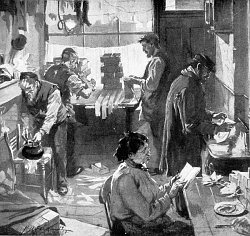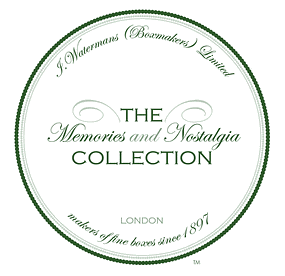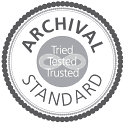|
|
About I. Waterman (Box Makers) Ltd.
|

Courtesy of The Illustrated London News
Picture Library |
The story of Waterman’s, the company synonymous
with the best in British box making, begins in
1897, when Jacob Waterman began making boxes at
home in Whitechapel for local businesses like
milliners, shoes makers and dress makers. What
began with cardboard and rolls of paper to make
boxes stored under the bed – soon expanded into
a flourishing little enterprise, which to this
day remains in same area of East London, within
yards of those early beginnings. The business
made covered and wire stitched solid board boxes
.
Though the company’s records were largely
destroyed during the Blitz in 1940, it is
understood that during World War One Waterman’s
turned their box-making machines to the
manufacture of boxes for ammunition holders,
whilst trying to support its traditional local
box business through this tough period. After
the war the business grew in line with the local
economy and the growing importance of the Port
of London and Docks.
In 1936 Jacob Waterman died at the age of 77 and
the Business continued to be run by his son
Isaac. During the 1939-45 conflicts, Waterman’s
were involved in the manufacture of boxes for
the M.O.D. It was at that time common practice
for M.O.D inspectors to regularly check and
stamp every box. During this time many other
family members were involved in the business as
it struggled through the war years.
Up until the occupation of the Netherlands in
1940, Waterman’s bought supplies of board for
box making from Holland. According to a family
legend, one of the last shipments from Holland
contained a much more valuable cargo .The story
has it that a member of Dutch nobility escaped
by hiding amongst the board on this merchant
vessel to avoid capture. In 1941 the factory was
severely damaged during a bombing raid and
fortunately Waterman’s were able to move some
production to any empty building on the other
side of Assembly Passage.
Under Isaac Waterman’s leadership the company
was incorporated in 1942 and the business was
registered as I. Waterman (Box Makers) Ltd. The
Initial I was used in the name simply because so
many people had mistaken Jacob’s J as an I.
Therefore to avoid further confusion, Isaac
therefore decided to go with majority view.
In 1954 Isaac Waterman died and his son Ashley
took over the running of the Business. During
this post war period Waterman’s grew and its
factory expanded and it ventured into the
manufacture of an entirely new type of box for
single shirts, starting with Rael Brook and
moving on to supply other leading manufactures.
The same type of box is still made today but the
innovation started a trend in innovation at
Waterman’s.

In the late 1960s and early 70s, corrugated
board and boxes, offering value and high
performance quality with reduced weight, started
to become increasingly popular as the medium for
packaging. We were one of the promoters of this
new material.
In the 1980s, Fisons, who had just started the
world’s first fish farm on the Mull of Kintyre
in Scotland, asked Waterman’s how to solve a
problem of keeping fish fresh on the journey
south. The solution was the Davpak insulated
box, the first of its kind.
At the turn of the 1990s, Waterman’s expanded
into the manufacture of commercial stationery
and storage boxes. These we supply for the
management and storage of commercial records,
files and archive material .We now produce more
than 500,000 record boxes a year.
At the end of the decade, Motorola of the USA,
set us the challenge of creating a box with a
printed antenna that could be integrated with an
“RFID” chip to track packages for stock control
and a multitude of other uses. It was thought
impossible – but we proved it could be done, at
minimal cost.
A few months later, The Times asked us to design
its Millennium Box. This contained editions of
the newspapers from 1 January 1800, 1900 and
2000, along with a book. It needed to be made of
acid-free board and we created the first general
application of the specialist storage materials
that we have been providing to museums and
archive repositories for decades. This was the
inspiration for the Memories & Nostalgia
Collection.
In 2000 Ashley Waterman died and now the company
continues to be run by David Waterman, the
fourth generation of the Waterman family.
Today, Waterman’s has grown into an
internationally respected success. Cardboard
engineering and solution based design has kept
the company at the leading edge of the industry
for over a century ,but spanning three centuries
.
If you buy bread, it is likely that it has been
carried in one of our containers – we produce
more than one million cardboard bread carriers a
year. If laid end-to-end, they would stretch
across Canada.
If you store records that need to be preserved
for decades, it’s likely that you use our
acid-free containers. In offices, you may well
use our box files. We are an environmentally
company and we have been recycling all our waste
for more than 50 years.
Over the years we have supplied almost every
type of packaging requirement and serve almost
every type of user.
In Jan 2007 the company was proud to be granted
the Royal Warrant of
Appointment as a Tradesman to Her Majesty
The Queen s a result of
I. Waterman (Box Makers) Ltd, having
been a direct supplier of Archive boxes to the Royal
Household since 2001. |
|





.gif)
